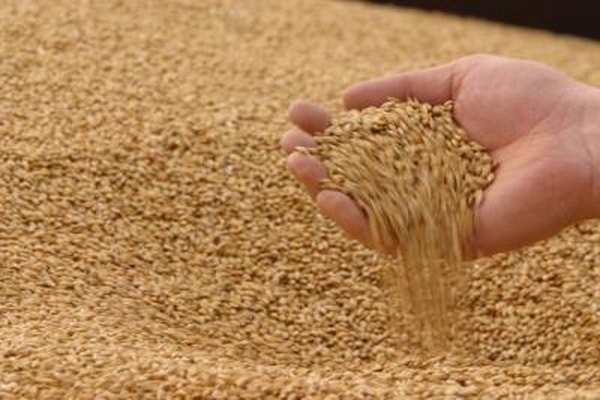How to Invest in Grain
Increasing worldwide demand keeps pushing grain prices higher.
Hemera Technologies/AbleStock.com/Getty Images
Investors can find new profits by trading in grain commodities. Corn, soybeans and wheat are popular grains enjoying significant price increases from worldwide rising demand. Investors can gain exposure to the grain market by trading agricultural commodity futures, options and exchange traded funds (ETFs) based on individual risk tolerance and financial strength.
Invest in grain commodity futures only if you have a high risk tolerance. A futures contract is an agreement to buy or sell the underlying commodity for a fixed price at a specific point in time. The contract specifications detail how much of the commodity is being traded, along with the initial and maintenance margins required per contract. For example, one soybean futures contract controls 5,000 bushels of the grain and has an initial margin of $3,375 and maintenance margin of $2,500. Grain futures are highly leveraged, and one tick, which is ¼ of a cent, equals $12.50, making a one-cent move worth $50. Grain markets are highly volatile, and futures investors must constantly monitor their trades.
Step 2Purchase a commodity futures option, which gives you the right, but not the obligation, to buy or sell a commodity futures contract at a set price before the option expires. Options carry substantially lower risk than commodity futures contracts, as the total amount you can lose is the price you paid for the option, plus the commission. For example, if corn is trading at $724.0 ($7.2400 per bushel), you can purchase a call option that expires March 2013 with a strike price of $725.00 ($7.2500) quoted at $30 for $1,500. (Corn is priced in cents, so the $30 is read as 30 cents multiplied by 5,000 bushels). If the price of corn goes above the $7.250 strike price before the option expires, you can close out the trade for a profit. If it stays at or drops below $7.250, you will lose your investment.
Step 3Buy agricultural ETFs, which carry the least amount of risk for the grain investor. The PowerShares DB Agriculture ETF tracks an agricultural index that includes wheat, corn, soybeans and sugar. Teucrium Funds offers the Teucrium Corn ETF and Teucrium Soybean ETF for investors who want a pure play on the underlying commodity. The potential loss is limited to the ETF purchase price plus any fees or commission.
References
Tips
- The U.S. Department of Agriculture (USDA) website provides crop yield estimates, and supply and demand projections for individual grains.
Warnings
- Futures and options are leveraged investments that carry high risk. Only trade with money you can afford to lose.
Writer Bio
Based in St. Petersburg, Fla., Karen Rogers covers the financial markets for several online publications. She received a bachelor's degree in business administration from the University of South Florida.

